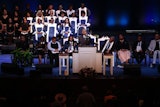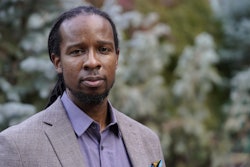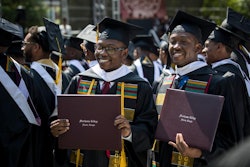A 2006 study by Gross and Simmons found that 68.2 percent of 1000 Americans surveyed believe that academia favors professors with liberal social and political views. Of this same sample, 37.5 percent claimed that political bias in the classroom is a very serious problem. This apparently common public perception is being used by partisan organizations to push for legislation which calls for “intellectual diversity.” While intellectual diversity may use the same vocabulary as the more progressive movement it is modeled after, it would almost certainly not have the same positive educational outcomes.
Intellectual diversity legislation has generally emphasized principles such as the “pursuit of truth” or “discovery of new knowledge.” Its purported goal is to protect students from the imposition of orthodoxy of a religious, political, or ideological nature by means of the purposeful advancement of a pluralistic campus environment. Such legislation often calls for additional government oversight or stronger protection of students’ rights. Pushed by groups such as the Horowitz Freedom Center, intellectual diversity legislation, according to the American Association of University Professors, has been proposed in 22 states. As recently as 2007 the Emily Brooker Intellectual Diversity Act passed the Missouri House of Representatives. The bill, named for a Missouri State University student who sued that institution in 2006 claiming she was retaliated against after she refused to support gay adoption as part of a class project, would require state universities to annually report to the state Legislature the steps they take to ensure the free exchange of ideas.
The intellectual diversity movement is also taking place among students themselves. Web sites such as “StudentsForAcademicfreedom.org” and “NoIndoctrination.org” solicit students to report experiences that they perceive as political bias in the classroom and post them in online forums on these sites. These reports are then used as support for the idea that a politically one-sided academia is working to indoctrinate students into holding liberal values.
Many speaking out against the intellectual diversity movement have argued that it is dangerous, inviting decisions which are currently based on professional standards to be made, instead, on political criteria. Others have claimed that intellectual diversity legislation is unwarranted because higher education already has procedures in place for students to make grievances should they perceive a bias of any kind, not just political. Still others have argued that research relied on by the intellectual diversity movement which illustrates a disproportional number of liberal professors in academia shows only correlation without showing causation. In other words, while there may be more liberal professors, no study has shown that those professors exercise a pervasive bias for their liberal views in the classroom or in their grading.
The major danger of this movement is its impact on the classroom. Tensions surrounding politics cause some education professionals to shy away from politically charged issues with students. In fact, it is the very act of creating a challenging learning environment and introducing students to new concepts that facilitates long-term identity and cognitive development. Students may reject many ideas they are presented with in college, and that is to be expected. Much of their intellectual development, however, depends on their ability to critically evaluate each of these ideas on its own merit. Faculty and administration need to work to foster an atmosphere of open-mined inquiry, both in the classroom and on campus. Students should be taught early in their college careers the importance of free discussion and the value of an open mind, both to themselves and to society as a whole.
Intellectual diversity, however, should be fostered from the ground up, starting in the classroom, not mandated through legislation. If academic freedoms are not protected and education professionals are not allowed to teach following the standards of their field, the intellectual diversity movement could have an impact that is the opposite of the one intended by limiting campus discussion to only topics that are deemed “safe.” This is not an invitation for educators to indoctrinate students in a certain political view, but rather to challenge students to grow intellectually by evaluating all views equally.
Dr. Darren L. Linvill is a lecturer and director of basic courses in the Department of Communications Studies at Clemson University.
Email the editor: [email protected]
Correction Appended: This story has been altered to correct the fact that while the Foundation for Individual Rights in Education (FIRE) has advocated for intellectual diversity and is an outspoken critic of academia, the organization has not pressed for legislation addressing the issue. We regret the error.
Click here to post and read comments
© Copyright 2005 by DiverseEducation.com


















